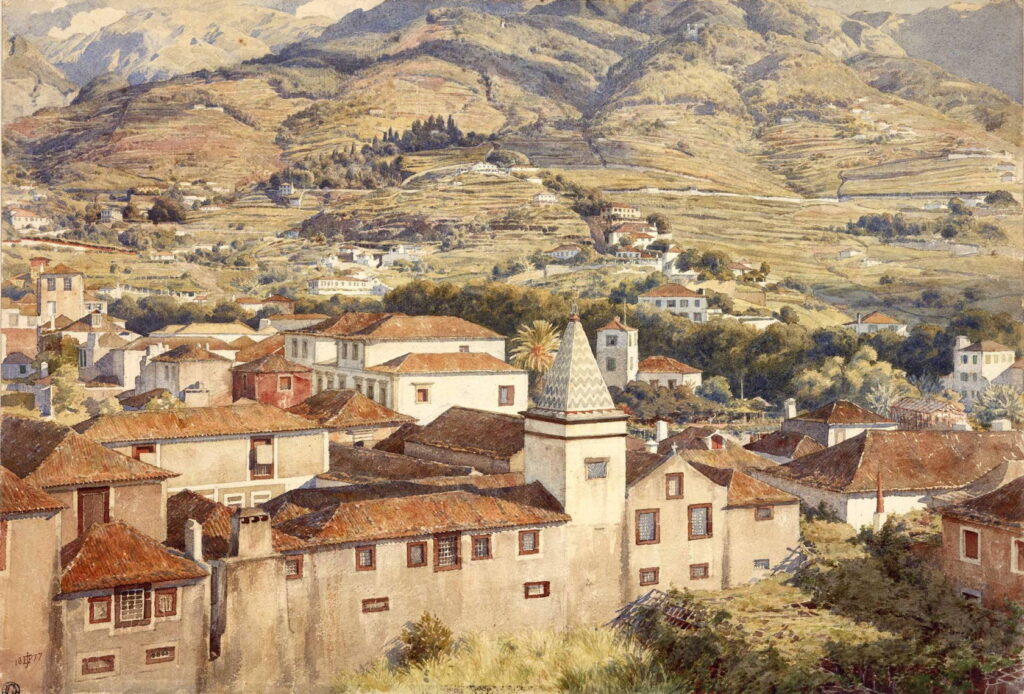Edward Poynter’s classical stories: 1 to 1880

In his day, Sir Edward Poynter (1836–1919) was one of the most eminent and influential British artists, but like so many in the later years of the nineteenth century, his work was soon reviled with the arrival of modernism. Unlike the Pre-Raphaelites and John Singer Sargent, Poynter remains unrehabilitated and largely unknown, despite holding the posts of Slade Professor at University College, London (1871-75), Principal of the National Art Training School (1875-81), Director of the National Gallery (1894-1904), and President of the Royal Academy (1896-1918).
Poynter first met Frederic, Lord Leighton, when he was only 17, and was immediately inspired to become a painter. Following only a year’s study at the Royal Academy Schools from 1855, he went to Paris, where he studied with Charles Gleyre, alongside James Whistler. He first exhibited at the Royal Academy in 1861.
Edward Poynter (1836–1919), Orpheus and Eurydice (1862), other details not known. Wikimedia Commons.
Orpheus and Eurydice (1862) is a straightforward narrative painting showing Orpheus leading his dead wife out of the underworld. Eurydice died tragically on their wedding day when she was bitten by a snake; Orpheus convinced the gods to allow him to enter the underworld to bring her back from the dead. His success in persuading them was dependent on his exceptional skills on the lyre that he carries. They’re striding past snakes and along a dizzying path on the mountainside, following the warning that at no time must Orpheus look back at Eurydice.
Edward Poynter (1836–1919), A Day Dream (1863), oil on canvas, 51 × 56 cm, Private collection. Wikimedia Commons.
A Day Dream from the following year appears to anticipate later Aesthetic painting with its emphasis on the other senses. The woman of its title is clearly day-dreaming, and has the forlorn look of deep, wistful thought as she stares into the distance. On her lap, carefully pointed at by her left hand, is a volume of poetry, and her right hand is absentmindedly playing the keys of a piano. This was first exhibited at the Royal Academy in 1863.
Edward Poynter (1836–1919), The Siren (c 1864), oil on canvas, dimensions not known, Private collection. Wikimedia Commons.
The Siren (c 1864) also has Aesthetic overtones in the lyre being played by this siren.
Edward Poynter (1836–1919), Israel in Egypt (1867), oil on canvas, dimensions not known, Guidhall Art Gallery, London. Wikimedia Commons.
Poynter’s first grand spectacle was Israel in Egypt from 1867, a finely detailed panorama depicting the Israelites during their time in bondage in Egypt. Although the popular press appreciated his archaeological basis, archaeologists of the day pointed out how he conflated elements from several different temples, including those at Thebes, Edfu, and Philae, together with the Great Pyramid at Giza, and the limestone cliffs of Thebes.
Edward Poynter (1836–1919), Catapulta (1868), further details not known. Wikimedia Commons.
Catapulta from the following year is a less grandiose depiction of the back end of a Roman siege catapult.
Edward Poynter (1836–1919), Andromeda (1869), oil on canvas, 49.5 × 33 cm, Private collection. Wikimedia Commons.
In his Andromeda from 1869, Poynter gives a faithful account of the fate of Andromeda, who was chained to a rock to await the arrival of Cetus, the sea monster. This is a fine figure study, if weak in narrative.
In 1869, Poynter completed a mosaic of Saint George and the Dragon in the Central Lobby of the Palace of Westminster, the home of the Houses of Parliament, in London.
Edward Poynter (1836–1919), Portrait of Georgiana Burne-Jones (1840-1920) (c 1870), media and dimensions not known, Private collection. Wikimedia Commons.
Poynter’s Portrait of Georgiana Burne-Jones (1840-1920), painted in about 1870 when she was thirty, is a delicate and demure portrait of the artist’s sister-in-law. She had married the Pre-Raphaelite painter Edward Burne-Jones a decade earlier. A painter and engraver herself, she was to become one of the last survivors of that era, alongside Marie Spartali Stillman.
Edward Poynter (1836–1919), The Peacock Fan: Portrait of Elizabeth Courtauld (1871), watercolour, 40.5 x 30.5 cm, Private collection. Wikimedia Commons.
The Peacock Fan: Portrait of Elizabeth Courtauld (1871) is an exquisite and unusual watercolour portrait of one of the members of this family of patrons of the arts, now famous for the Courtauld Institute and its Gallery in London. The profusion of peacock feathers may well be another marker of Aestheticism.
That year, Poynter was appointed the first Slade Professor at University College, London, a post he held until 1875.
Edward Poynter (1836–1919), Paul and Apollos (1872), fresco on plaster, 61 x 61 cm, The Tate Gallery (Purchased 1918), London. © The Tate Gallery and Photographic Rights © Tate (2016), CC-BY-NC-ND 3.0 (Unported), http://www.tate.org.uk/art/artworks/poynter-paul-and-apollos-n03320
Paul and Apollos (1872) was a trial of fresco on plaster made by Poynter before tackling full-scale fresco painting in the Church of Saint Stephen in South Dulwich, London. This is based on a New Testament quotation from Paul’s first letter to the Corinthians 3:5-9, and shows two early Christians, Paul, who had been a Jew, and Apollos, a Greek, with the quotation “I planted, Apollos watered; but God gave the increase.”
In 1875, Poynter was appointed principal of the National Art Training School, in South Kensington, London; that was renamed the Royal College of Art about twenty years later. The following year he was elected a full member of the Royal Academy.
Edward Poynter (1836–1919), Funchal, Morning Sun (1877), watercolour, dimensions not known, Private collection. Wikimedia Commons.
Funchal, Morning Sun (1877) is Poynter’s startlingly detailed watercolour landscape of Funchal on the island of Madeira, probably painted from the verandah of Poynter’s hotel, Hotel Reids Santa Clara. He had been troubled by illness from childhood, and often stayed in Madeira during the winter.
Reference



